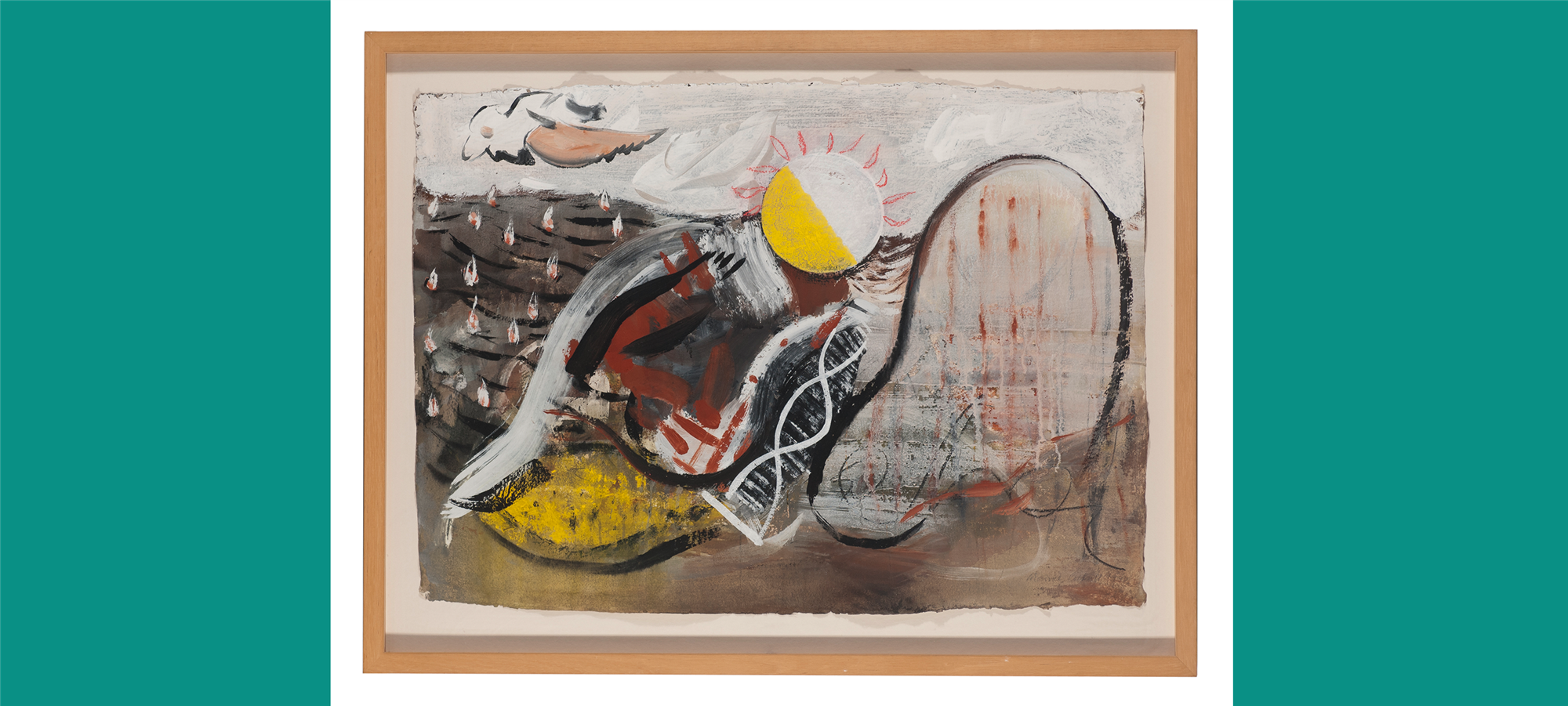LITTLE FIRES, 1993
By Maurice Cockrill (1936-2013)
Gouache on paper
58 x 79cm
The ‘little fires’ of the title are visible to the left-hand side of the composition: tongues of flame flickering across what appear to be the furrows of a ploughed field. They might suggest farmland laid to waste during some period of conflict, or more likely, allude to the practice of stubble burning, once a familiar sight in the countryside after the harvest season, but prohibited after 1993. Flame-like forms also radiate from the prominent circular shape, which although divided into halves of yellow and white and as flat as a road-sign, we can’t help but read as a sun. Just beneath this are the twisting strands of the double helix symbol, though some of the other motifs are more enigmatic: a bird-like form overhead, and the suggestion of germinating seeds just visible below the ground.
This work was created towards the very end of Maurice Cockrill’s ‘landscape’ phase, which had begun in the late 1980s: after this, he would turn progressively towards abstraction. It is closely related to a major series of paintings on the theme of wheat, comprising about thirty works in all, several on a large scale. These paintings combined imagery of sky and earth, growth and grain, expressed through a highly personal language of symbolic forms. A number of the wheat paintings featured passages of bold primary colour, but Little Fires is low-key in its palette, with the exception of that yellow semi-circle.

Click on the picture to open up a full view that you can zoom in.
This is a work on paper, but it is not a drawing in the sense of a preparatory work for a painting. Cockrill’s technique is the same here as it would have been on canvas: working quickly to establish the main elements of the composition in a series of direct, spontaneous brushstrokes.
A world is roughed-out with looping, sweeping gestures, reflecting the artist’s admiration for the Abstract Expressionists, particularly the work of Jackson Pollock.
Other passages are worked-in with more delicate brushwork, with motifs floated across the surface or partially obscured beneath it.
Three of the four elements - earth, air and fire – are present in this work, and perhaps water too, if you count the hinted-at subterranean channels and syphons. Of these elements,
fire was always important for Cockrill.
His earliest landscapes took as their subject the disrupted terrain of that part of North Wales in which he grew up, contaminated by molten waste from the local steelworks and with fires smouldering in the undergrowth. By comparison, Little Fires is in a more pastoral register. It entered the University collections to mark the occasion of a retrospective exhibition of Cockrill’s work at the Djanogly Gallery in 1995. By that date, he had turned to the theme of fire once again: the most recent painting in the exhibition inaugurated a new series titled Place of Fire, and took as its subject the Fire of London of 1666. Nottingham’s acquisition was an appropriate choice: little fires anticipating a Great Fire.
To find out more about Maurice Cockrill, and to see other works by him
visit Art UK's website.